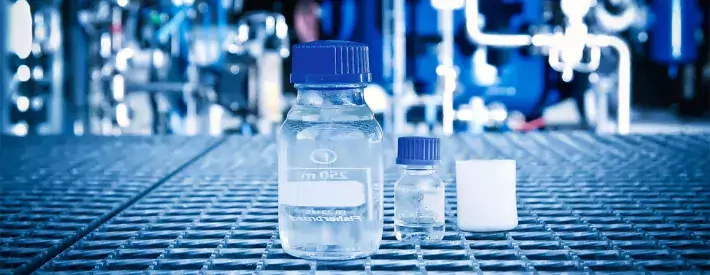How synthetic fuels could help the industry achieve-climate neutral mobility

E-fuels could play an important role in enabling near zero-emissions internal combustion engines using renewable energy sources
Governments around the world are determined to head towards an electrified future. But with combustion engines still providing the majority of power for the vehicles on the road, is there still room for a technology that has taken us places for over a century?
Synthetic fuels could deliver emission-free propulsion without shifting about away from combustion engines.
Industry giant Tenneco is just one of a number of firms investing in improving vehicle fuel efficiency and reducing emissions by exploring synthetic fuels, a near-term solution to maximise efficiency, and minimise the carbon footprint of internal combustion engines.
Tenneco is working with academic and industry experts to examine the technical possibilities, and commercial feasibility of synthetic fuels, as a key technology to help the industry transition to climate-neutral transportation as part of the NAMOSYN project.
Still combusting fuel
Synthetic fuels for passenger vehicles, commercial trucks and even marine applications can play an important role in achieving a near zero emissions mobility, by using renewable energy sources, such as solar or wind power, to create a closed CO2 cycle when viewed from a holistic “well-to-wheel” perspective. A climate-neutral alternative to petroleum-based fuels, they also offer the potential for significantly reduced overall emissions.
Synthetically produced, climate-neutral e-fuels can be used in today’s petrol and diesel engines with only minor modifications for most e-fuels, and in blends with conventional fuels. This makes them particularly suitable for vehicles with traditional combustion engines as well as alternative powertrains such as hybrids. Not only that, delivery doesn’t mean ripping up the infrastructure as the e-fuels can be delivered using mostly the existing, well-developed fuel distribution and filling station infrastructure with only minor adjustments.
“It’s widely acknowledged that solutions must be found to reduce a vehicle’s carbon footprint. In addition to light vehicles, internal combustion engines are also popular in trucks, marine propulsion, construction equipment and agricultural machinery,” explains Dr Steffen Hoppe, Director Global Technology for piston rings and cylinder liners at Tenneco´s Powertrain. “Regardless of the differing opinions when full electrification will be reached, any technology that we can adopt now that enables a significant reduction in CO2 emissions, or even CO2-neutral operation of the combustion engine, will be an essential contributor to the achievement of climate targets. We are excited to be an active part in the development of this type of technology.”
So what’s the NAMOSYN research project?
To help further the understanding of synthetic fuel technology, Tenneco has joined a consortium of automotive suppliers, vehicle and fuel manufacturers, chemical companies, institutes and universities as part of the NAMOSYN project.
The project is working to develop cost-effective and energy efficient manufacturing processes for synthetic fuels and to test them in internal combustion engines. In the diesel sector, this notably concerns the group of oxymethylene ethers; for gasoline engines, the focus is on dimethyl carbonate and methyl formate. In parallel, a wide range of different material configurations are tested to determine the optimum synthesis and composition over/across the entire process chain.
Initial results of the current research are promising. “By using synthetic fuels in internal combustion engines, we have been able to demonstrate a reduction of 50% or more in all nitrogen oxide, carbon monoxide and particle emissions,” explains Bartosch Gadomski, Senior Test Engineer and Project Manager NAMOSYN at Tenneco. “In order to actively support the timely market introduction of synthetic fuels as far as possible, we also test mixtures or blends of conventional fuels and e-fuels under real conditions on our engine test benches.”
An important part of the technology mix
To minimise climate impacting emissions, synthetic fuels need to be produced using electricity generated from carbon neutral renewable sources.
Not only that but e-fuels need to deliver comparable combustion properties so the combustion engine can be operated as efficiently as possible, and local pollutant emissions can be kept low. One of the advantages of synthetic fuels is that their composition can be developed specifically to meet the needs and different performance requirements of their applications.
“The development of new vehicles with combustion engines must pursue the goal that these drives will be climate-neutral. We need synthetic fuels and hydrogen from sustainable energy sources in order to achieve the climate targets for future cars and trucks, but also for the millions of existing vehicles powered by an internal combustion engine,” says Hoppe.




